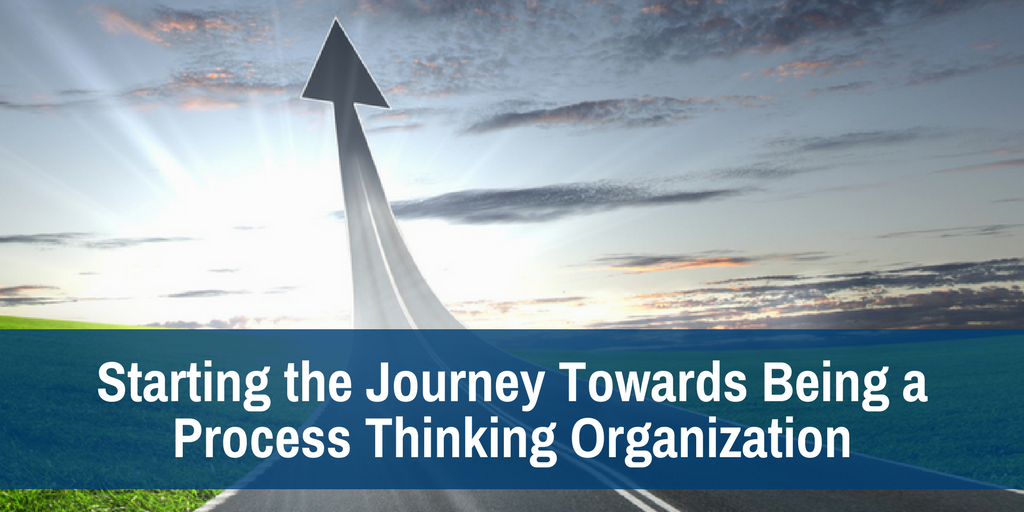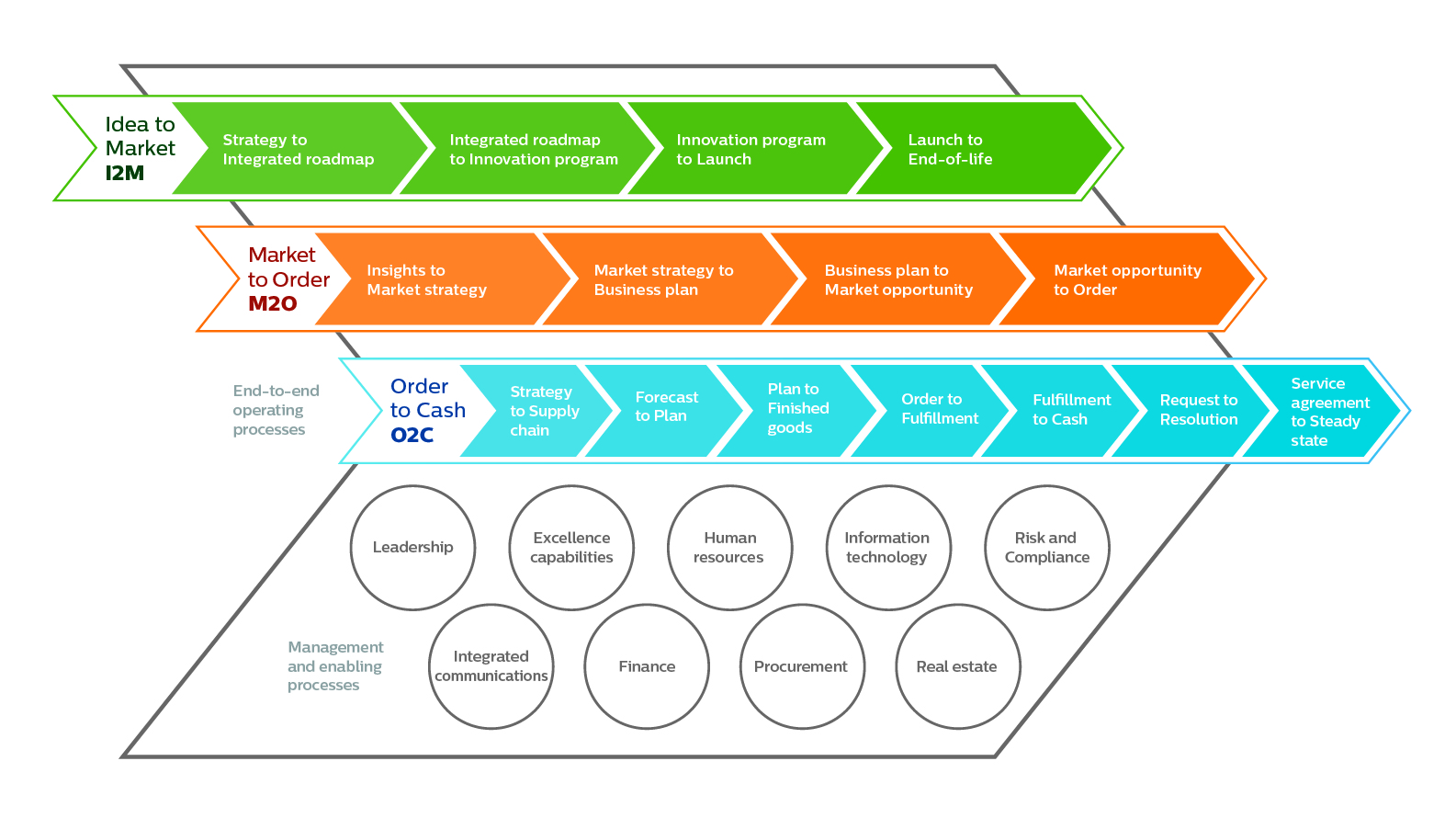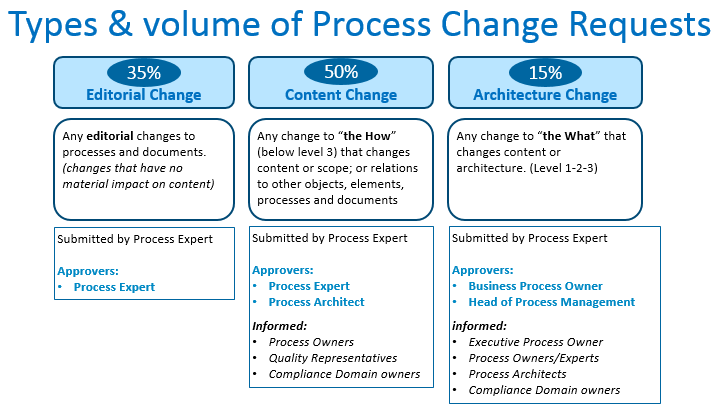I recently talked to David Sebel at Philips Lighting about what goes into starting an organization down the path of setting up a business process management (BPM) vision and strategy, governance, and organization.
 David will be presenting The Journey Towards a Process Thinking Organization at APQC’s Process & Performance Management Conference.
David will be presenting The Journey Towards a Process Thinking Organization at APQC’s Process & Performance Management Conference.
Why did you start with a small core team of business process owners?
Our process framework consists of three core process domains that represent end-to-end value streams (Idea–to-Market, Market-to–Order, and Order-to-Cash), plus nine management and enabling process domains like HR, IT, and Finance.

Each of these process domains are owned by a business process owner who is responsible for the process design, standardization, maintenance, and optimization in their domain.
We decided that the business process owners of these core processes should be in the driver seat when it comes to setting up the process management practice, methods, and principles. Therefore we established the Process Framework Governance Board which consisted of these 3 core business process owners, chaired by the head of quality, and supported by the quality system manager, and head of process management. This team of six were completely empowered and mandated to take all relevant decisions regarding the governance of the process framework.
Why is good governance so critical at the start? How do you define good governance?
When setting up a process framework and process management organization you have to focus on the long-term objectives. In our case we were committed to achieve a sustainable set of standardized and customer-focused processes, available in one global quality system, to drive continuous improvement towards excellence and customer satisfaction. Additionally, you have to realize that introducing process thinking; in any traditional, silo-based organization is more of a cultural change than anything else.
Setting up good governance early in the journey allows you to define the end objective as a team and drive not only the technical development of a process framework, but also focus on the communication and cultural aspects related to successful deployment. Additionally, it enables you to set criteria for change that are in line with the long-term objectives, to prevent you from continuously reacting and sub-optimizing based on short-term benefits and daily operational pressures.
Good governance to me comes down to having the structures, criteria, and processes in place to reach the long-term objectives in a practical manner; while creating, keeping, and utilizing the momentum for change.
What common mistakes do organizations make about governance?
I can imagine that the term governance is often perceived as control mechanisms that are not practical and slow down the progress you want to make in the project and in the organization. This can be true if you over-engineer and over-control, but in my experience good governance and change control processes achieve the exact opposite.
For example, we deliberately delegated much of the approval authority for process changes as low as possible in our process management organization.

Such a decision is a governance decision, and in this case based on the premise that we have capable people working on design and deployment that have the ability to make the right decisions. They are supported by clear guidelines on what they can change within their authority, and a workflow that informs relevant stakeholders about upcoming changes. Setting these guidelines and working instructions are also governance decisions. In practice this means that 85% of our process framework related changes require minimal level of approval. This allows for a practical and agile approach to process change control and helps keep the system and framework alive in the organization, while assuring the framework’s integrity.
Additionally it is worth noting that there is another form of self-governance that becomes active once you have reached a critical mass in your deployment; the end-user. If through your governance decisions you have enabled the end user to easily provide feedback on the quality of the processes to the right people, they will use this functionality to drive continuous improvement and help govern the quality of the process framework, because if a process does not work, they will tell you!
So in essence when setting up governance, don’t make it about control. Instead keep it practical, empower capable people to make the right decisions, and make governance about enabling the organization to perform.
Philips Lighting validated, designed, and published its process framework and reached 80 percent completion within 1.5 years. What was the biggest reason for this success?
We inherited an existing process framework from our mother company that was practically not owned within Philips Lighting and not fit for purpose. So this process framework needed to be owned, validated, (re) designed, deployed, and supported by a process management practice and organization. This was an enormous task.
Our success can be contributed to a combination of things. Having the right momentum; strong leadership support; and a very talented, committed, and passionate team that is fully empowered and strongly believes in the purpose of our journey, long-term objectives, and the capabilities to drive the change.
After that, its about the details of setting up the governance, the practice, the tools and methodology; this is where working with APQC standards and research was key. Followed by simply starting with driving and tracking progress of design and deployment as a project supported by our communication and change strategies.